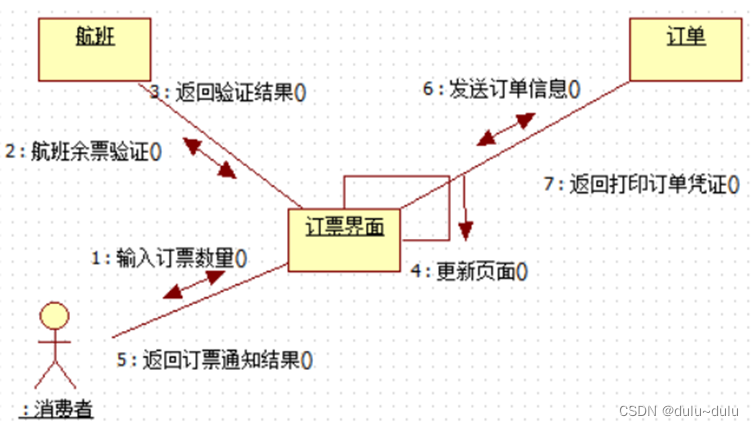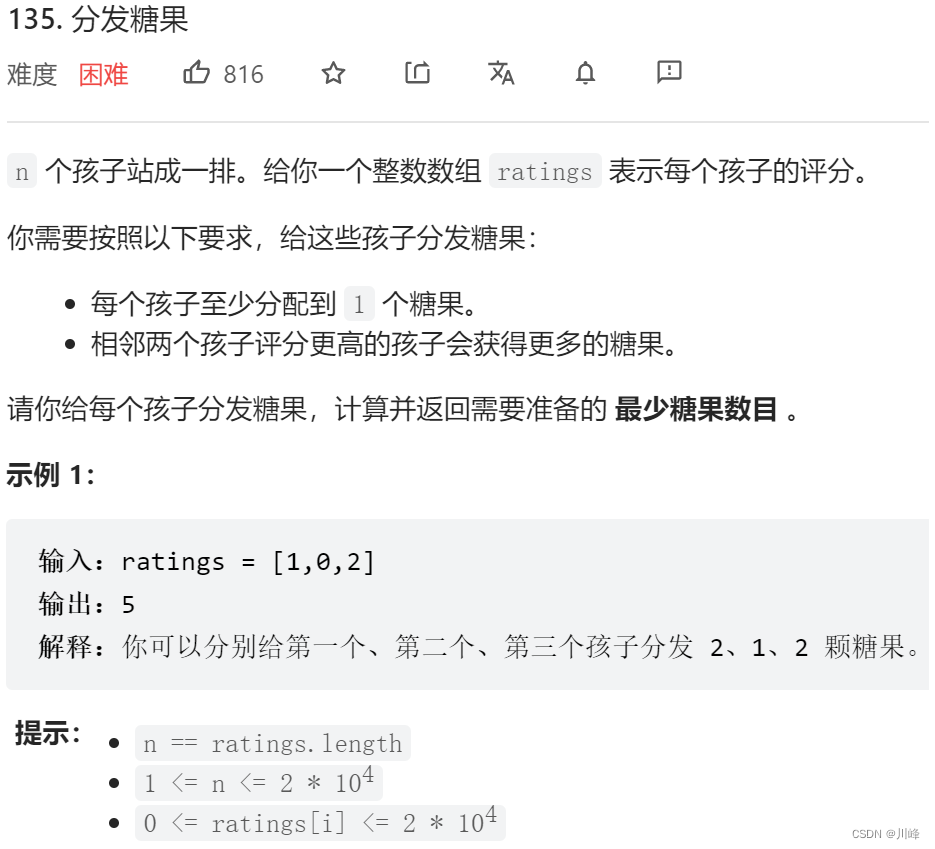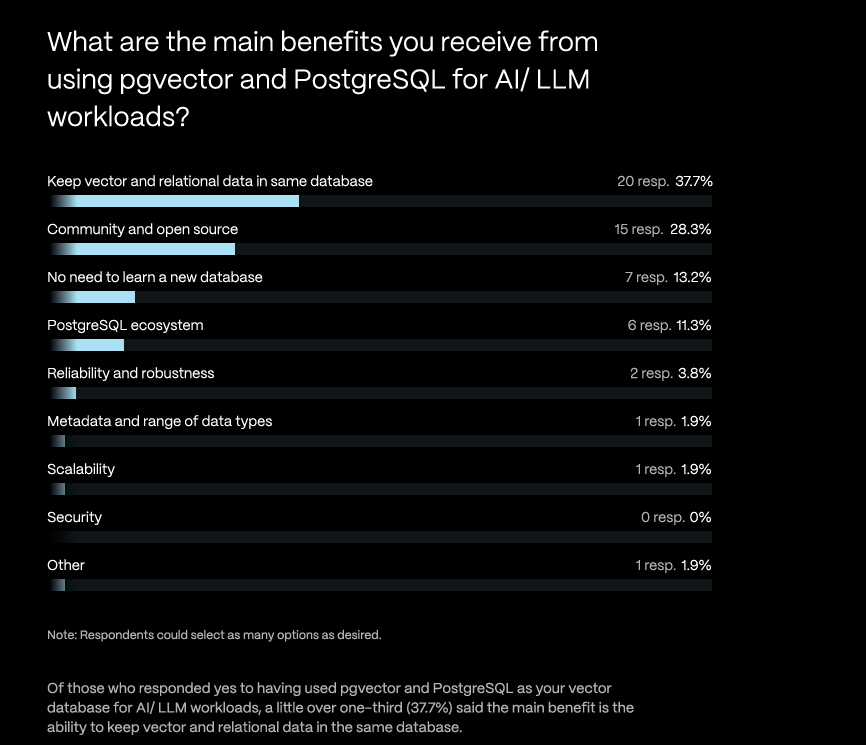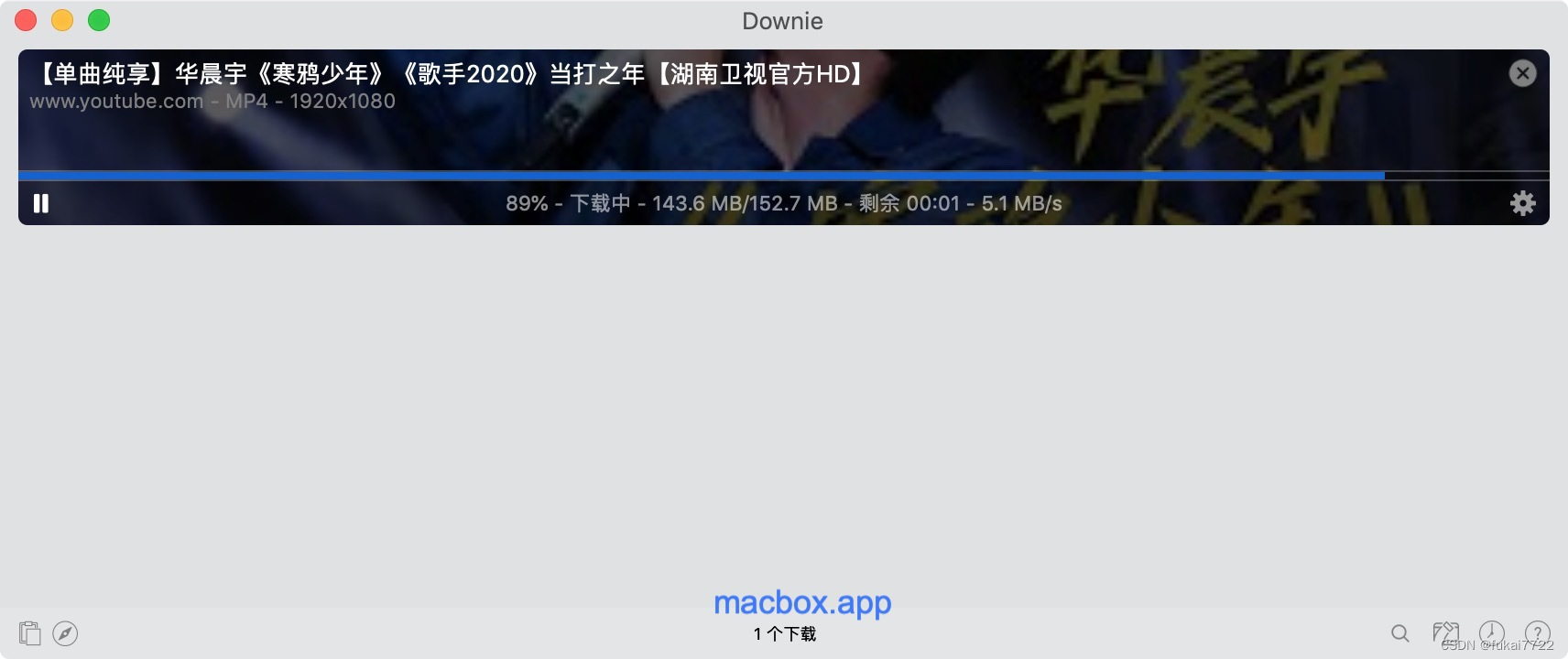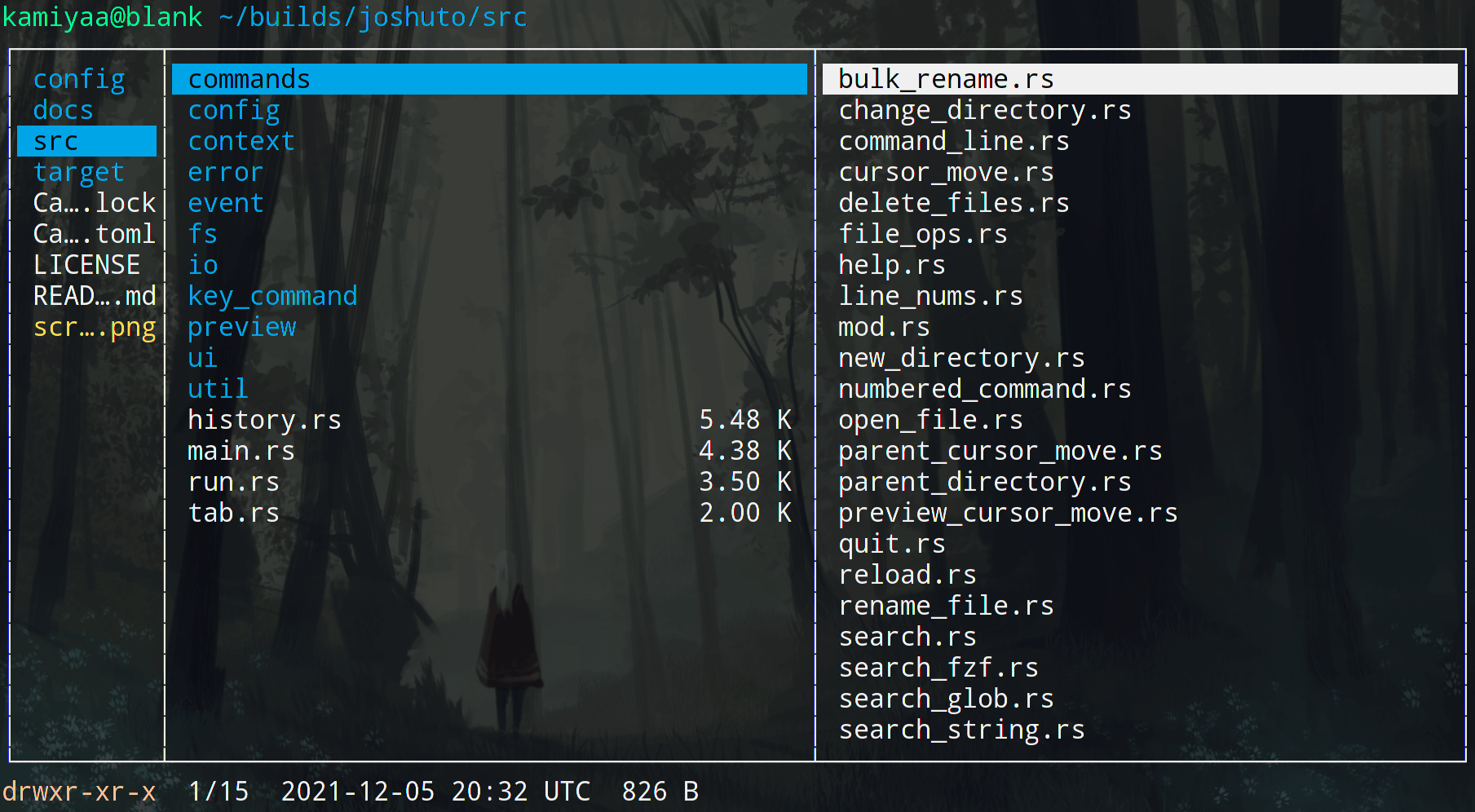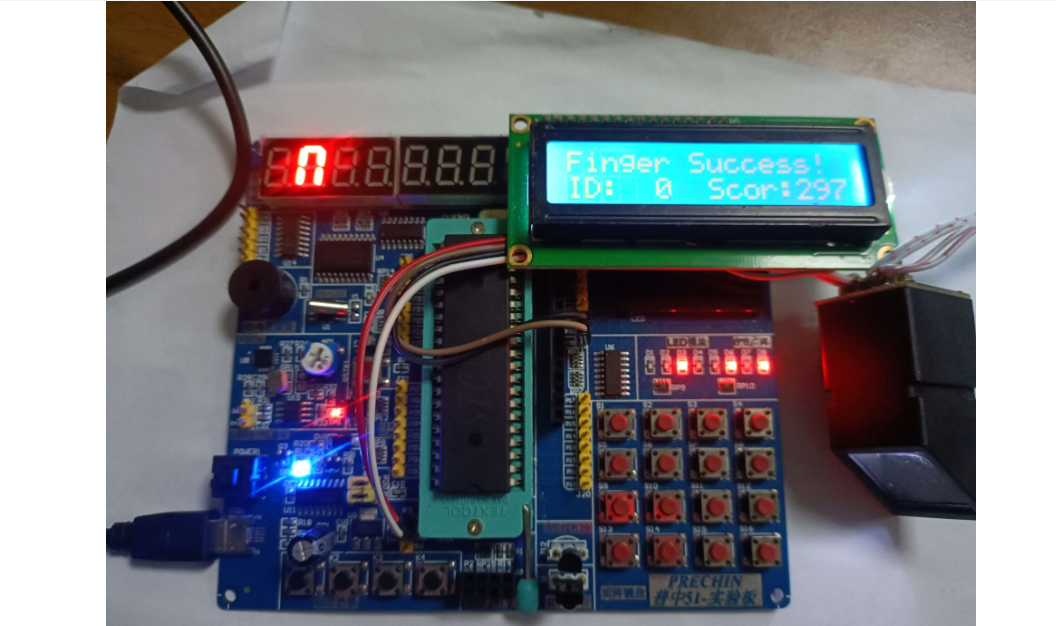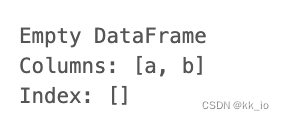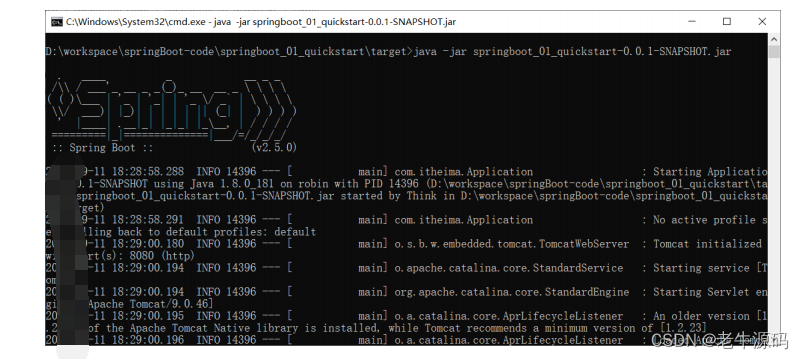一、本文介绍
本文给大家带来的改进机制是MobileNetV3,其主要改进思想集中在结合硬件感知的网络架构搜索(NAS)和NetAdapt算法,以优化移动设备CPU上的性能。它采用了新颖的架构设计,包括反转残差结构和线性瓶颈层,以及新的高效分割解码器Lite Reduced Atrous Spatial Pyramid Pooling(LR-ASPP),以提升在移动分类、检测和分割任务上的表现。实验表明,MobileNets在资源和准确性的权衡方面表现出色,并在多种应用(如对象检测、细粒度分类、面部属性识别和大规模地理定位)中展现了其有效性。
适用检测目标:这个模型非常适合轻量化的读者来使用,同时伴随着大幅度的涨点。
推荐指数:⭐⭐⭐⭐⭐
专栏回顾:YOLOv8改进系列专栏——本专栏持续复习各种顶会内容——科研必备
效果回顾展示->
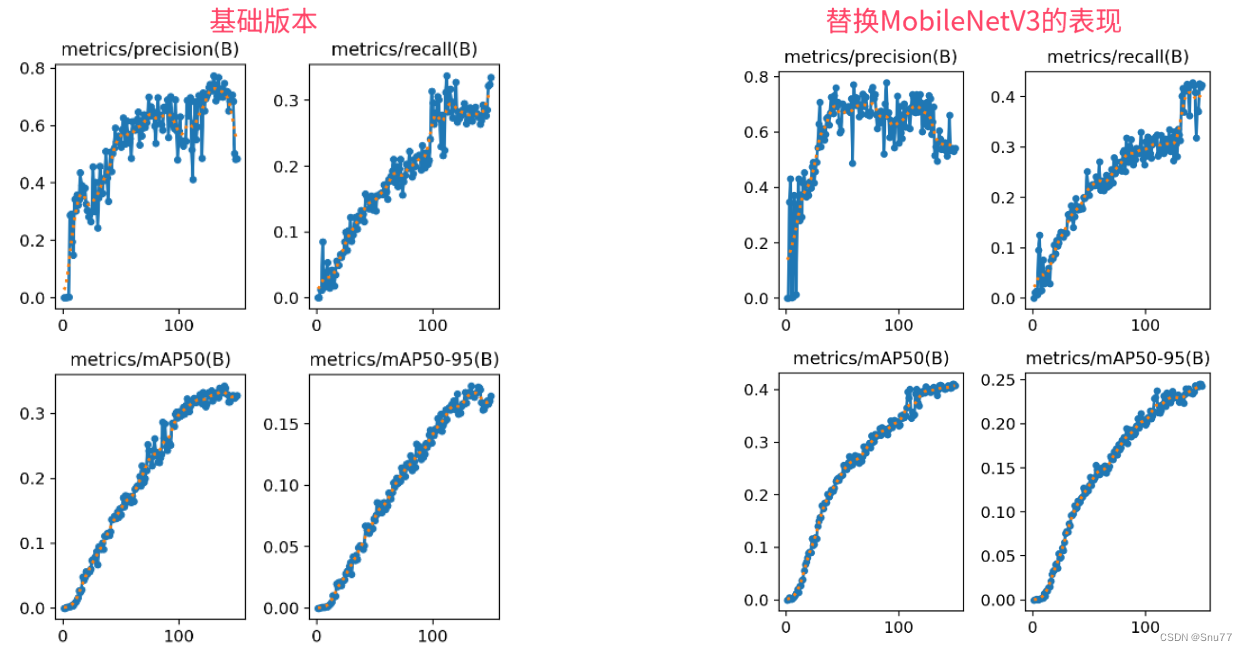
目录
一、本文介绍
二、MobileNetV3的框架原理
2.1 NAS和NetAdapt算法
2.2 反转残差结构和线性瓶颈层
三、MobileNetV3的核心代码
四、手把手教你添加MobileNetV3网络结构
修改一
修改二
修改三
修改四
修改五
修改六
修改七
修改八
五、MobileNetV3的yaml文件
六、成功运行记录
七、本文总结
二、MobileNetV3的框架原理
 官方论文地址:官方论文地址点击即可跳转
官方论文地址:官方论文地址点击即可跳转
官方代码地址:官方代码地址

MobileNetV3的主要改进思想集中在结合硬件感知的网络架构搜索(NAS)和NetAdapt算法,以优化移动设备CPU上的性能。它采用了新颖的架构设计,包括反转残差结构和线性瓶颈层,以及新的高效分割解码器Lite Reduced Atrous Spatial Pyramid Pooling(LR-ASPP),以提升在移动分类、检测和分割任务上的表现。这些改进通过精心设计的轻量级架构,实现了更高的准确度、更低的延迟,并在不同的资源使用场景中实现了更好的性能。
MobileNetV3的主要创新点包括:
1. 结合了硬件感知的网络架构搜索(NAS)和NetAdapt算法,针对移动设备CPU进行优化。
2. 引入了新颖的架构设计,包括反转残差结构和线性瓶颈层。
3. 提出了高效的Lite Reduced Atrous Spatial Pyramid Pooling(LR-ASPP)作为新的分割解码器。
2.1 NAS和NetAdapt算法
MobileNetV3采用了硬件感知的网络架构搜索(NAS)和NetAdapt算法,这两种技术相互补充,可以结合起来有效地为特定硬件平台找到优化的模型。特别是,它采用了平台感知NAS进行块级搜索,类似于之前的MnasNet-A1方法,使用相同的基于RNN的控制器和相同的分解层次搜索空间,以便为大型移动模型找到全局网络结构,目标是大约80ms的延迟。然后在此基础上应用NetAdapt算法和其他优化措施。这种方法允许在顺序方式中对单个层进行微调,而不是尝试推断粗略但全局的架构。NetAdapt的第二个技术是用于层级搜索,它更适用于小型移动模型,因为对于小型模型来说,准确性随着延迟的变化更加显著,因此需要一个较小的权重因子w = -0.15来补偿不同延迟下的较大准确性变化。通过这个新的权重因子,我们从头开始一个新的架构搜索,以找到初始种子模型,然后应用NetAdapt和其他优化来获得最终的MobileNetV3-Small模型
2.2 反转残差结构和线性瓶颈层
MobileNetV3在架构上进行了一些修改,以降低某些较慢层的延迟,同时保持准确性。这些修改超出了当前搜索空间的范围。第一项修改重新设计了网络的最后几层是如何相互作用以更有效地生成最终特征的。基于MobileNetV2的反转瓶颈结构的当前模型在最终层使用1x1卷积以扩展到更高维的特征空间。这一层对于预测中拥有丰富的特征至关重要。然而,这也增加了额外的延迟。为了减少延迟并保留高维特征,我们将这一层移到最终的平均池化之后

上图展示了MobileNetV2和MobileNetV3的网络结构层。
上侧 (MobileNetV2层):展示了反转残差和线性瓶颈结构。每个块由狭窄的输入和输出层组成,这些层没有非线性操作,后面跟着扩展到更高维空间并投影到输出的操作。残差连接连接了瓶颈层,而不是扩展层。
下侧 (MobileNetV2 + Squeeze-and-Excite): 展示了与Squeeze-and-Excite层一起使用的MobileNetV3。与先前不同,在残差层中应用了挤压和激励操作。
三、MobileNetV3的核心代码
下面的代码是整个MobileNetV1的核心代码,大家如果想学习可以和上面的框架原理对比着看一看估计会有一定的收获,使用方式看章节四。
"""A from-scratch implementation of MobileNetV3 paper ( for educational purposes ).
Paper
Searching for MobileNetV3 - https://arxiv.org/abs/1905.02244v5
author : shubham.aiengineer@gmail.com
"""
import torch
from torch import nn
from torchsummary import summary
class SqueezeExitationBlock(nn.Module):
def __init__(self, in_channels: int):
"""Constructor for SqueezeExitationBlock.
Args:
in_channels (int): Number of input channels.
"""
super().__init__()
self.pool1 = nn.AdaptiveAvgPool2d(1)
self.linear1 = nn.Linear(
in_channels, in_channels // 4
) # divide by 4 is mentioned in the paper, 5.3. Large squeeze-and-excite
self.act1 = nn.ReLU()
self.linear2 = nn.Linear(in_channels // 4, in_channels)
self.act2 = nn.Hardsigmoid()
def forward(self, x):
"""Forward pass for SqueezeExitationBlock."""
identity = x
x = self.pool1(x)
x = torch.flatten(x, 1)
x = self.linear1(x)
x = self.act1(x)
x = self.linear2(x)
x = self.act2(x)
x = identity * x[:, :, None, None]
return x
class ConvNormActivationBlock(nn.Module):
def __init__(
self,
in_channels: int,
out_channels: int,
kernel_size: list,
stride: int = 1,
padding: int = 0,
groups: int = 1,
bias: bool = False,
activation: torch.nn = nn.Hardswish,
):
"""Constructs a block containing a convolution, batch normalization and activation layer
Args:
in_channels (int): number of input channels
out_channels (int): number of output channels
kernel_size (list): size of the convolutional kernel
stride (int, optional): stride of the convolutional kernel. Defaults to 1.
padding (int, optional): padding of the convolutional kernel. Defaults to 0.
groups (int, optional): number of groups for depthwise seperable convolution. Defaults to 1.
bias (bool, optional): whether to use bias. Defaults to False.
activation (torch.nn, optional): activation function. Defaults to nn.Hardswish.
"""
super().__init__()
self.conv = nn.Conv2d(
in_channels,
out_channels,
kernel_size,
stride=stride,
padding=padding,
groups=groups,
bias=bias,
)
self.norm = nn.BatchNorm2d(out_channels)
self.activation = activation()
def forward(self, x):
"""Perform forward pass."""
x = self.conv(x)
x = self.norm(x)
x = self.activation(x)
return x
class InverseResidualBlock(nn.Module):
def __init__(
self,
in_channels: int,
out_channels: int,
kernel_size: int,
expansion_size: int = 6,
stride: int = 1,
squeeze_exitation: bool = True,
activation: nn.Module = nn.Hardswish,
):
"""Constructs a inverse residual block
Args:
in_channels (int): number of input channels
out_channels (int): number of output channels
kernel_size (int): size of the convolutional kernel
expansion_size (int, optional): size of the expansion factor. Defaults to 6.
stride (int, optional): stride of the convolutional kernel. Defaults to 1.
squeeze_exitation (bool, optional): whether to add squeeze and exitation block or not. Defaults to True.
activation (nn.Module, optional): activation function. Defaults to nn.Hardswish.
"""
super().__init__()
self.residual = in_channels == out_channels and stride == 1
self.squeeze_exitation = squeeze_exitation
self.conv1 = (
ConvNormActivationBlock(
in_channels, expansion_size, (1, 1), activation=activation
)
if in_channels != expansion_size
else nn.Identity()
) # If it's not the first layer, then we need to add a 1x1 convolutional layer to expand the number of channels
self.depthwise_conv = ConvNormActivationBlock(
expansion_size,
expansion_size,
(kernel_size, kernel_size),
stride=stride,
padding=kernel_size // 2,
groups=expansion_size,
activation=activation,
)
if self.squeeze_exitation:
self.se = SqueezeExitationBlock(expansion_size)
self.conv2 = nn.Conv2d(
expansion_size, out_channels, (1, 1), bias=False
) # bias is false because we are using batch normalization, which already has bias
self.norm = nn.BatchNorm2d(out_channels)
def forward(self, x):
"""Perform forward pass."""
identity = x
x = self.conv1(x)
x = self.depthwise_conv(x)
if self.squeeze_exitation:
x = self.se(x)
x = self.conv2(x)
x = self.norm(x)
if self.residual:
x = x + identity
return x
class MobileNetV3(nn.Module):
def __init__(
self,
n_classes: int = 1000,
input_channel: int = 3,
config: str = "large",
dropout: float = 0.8,
):
"""Constructs MobileNetV3 architecture
Args:
`n_classes`: An integer count of output neuron in last layer, default 1000
`input_channel`: An integer value input channels in first conv layer, default is 3.
`config`: A string value indicating the configuration of MobileNetV3, either `large` or `small`, default is `large`.
`dropout` [0, 1] : A float parameter for dropout in last layer, between 0 and 1, default is 0.8.
"""
super().__init__()
# The configuration of MobileNetv3.
# input channels, kernel size, expension size, output channels, squeeze exitation, activation, stride
RE = nn.ReLU
HS = nn.Hardswish
configs_dict = {
"small": (
(16, 3, 16, 16, True, RE, 2),
(16, 3, 72, 24, False, RE, 2),
(24, 3, 88, 24, False, RE, 1),
(24, 5, 96, 40, True, HS, 2),
(40, 5, 240, 40, True, HS, 1),
(40, 5, 240, 40, True, HS, 1),
(40, 5, 120, 48, True, HS, 1),
(48, 5, 144, 48, True, HS, 1),
(48, 5, 288, 96, True, HS, 2),
(96, 5, 576, 96, True, HS, 1),
(96, 5, 576, 96, True, HS, 1),
),
"large": (
(16, 3, 16, 16, False, RE, 1),
(16, 3, 64, 24, False, RE, 2),
(24, 3, 72, 24, False, RE, 1),
(24, 5, 72, 40, True, RE, 2),
(40, 5, 120, 40, True, RE, 1),
(40, 5, 120, 40, True, RE, 1),
(40, 3, 240, 80, False, HS, 2),
(80, 3, 200, 80, False, HS, 1),
(80, 3, 184, 80, False, HS, 1),
(80, 3, 184, 80, False, HS, 1),
(80, 3, 480, 112, True, HS, 1),
(112, 3, 672, 112, True, HS, 1),
(112, 5, 672, 160, True, HS, 2),
(160, 5, 960, 160, True, HS, 1),
(160, 5, 960, 160, True, HS, 1),
),
}
self.model = nn.Sequential(
ConvNormActivationBlock(
input_channel, 16, (3, 3), stride=2, padding=1, activation=nn.Hardswish
),
)
for (
in_channels,
kernel_size,
expansion_size,
out_channels,
squeeze_exitation,
activation,
stride,
) in configs_dict[config]:
self.model.append(
InverseResidualBlock(
in_channels=in_channels,
out_channels=out_channels,
kernel_size=kernel_size,
expansion_size=expansion_size,
stride=stride,
squeeze_exitation=squeeze_exitation,
activation=activation,
)
)
hidden_channels = 576 if config == "small" else 960
_out_channel = 1024 if config == "small" else 1280
self.model.append(
ConvNormActivationBlock(
out_channels,
hidden_channels,
(1, 1),
bias=False,
activation=nn.Hardswish,
)
)
self.index = [16, 24, 48, 576]
self.width_list = [i.size(1) for i in self.forward(torch.randn(1, 3, 640, 640))]
def forward(self, x):
"""Perform forward pass."""
results = [None, None, None, None]
for model in self.model:
x = model(x)
if x.size(1) in self.index:
position = self.index.index(x.size(1)) # Find the position in the index list
results[position] = x
return results
if __name__ == "__main__":
# Generating Sample image
image_size = (1, 3, 224, 224)
image = torch.rand(*image_size)
# Model
mobilenet_v3 = MobileNetV3(config="small")
# summary(
# mobilenet_v3,
# input_data=image,
# col_names=["input_size", "output_size", "num_params"],
# device="cpu",
# depth=2,
# )
out = mobilenet_v3(image)
print("Output shape : ", out.shape)四、手把手教你添加MobileNetV3网络结构
这个主干的网络结构添加起来算是所有的改进机制里最麻烦的了,因为有一些网略结构可以用yaml文件搭建出来,有一些网络结构其中的一些细节根本没有办法用yaml文件去搭建,用yaml文件去搭建会损失一些细节部分(而且一个网络结构设计很多细节的结构修改方式都不一样,一个一个去修改大家难免会出错),所以这里让网络直接返回整个网络,然后修改部分 yolo代码以后就都以这种形式添加了,以后我提出的网络模型基本上都会通过这种方式修改,我也会进行一些模型细节改进。创新出新的网络结构大家直接拿来用就可以的。下面开始添加教程->
(同时每一个后面都有代码,大家拿来复制粘贴替换即可,但是要看好了不要复制粘贴替换多了)
修改一
我们复制网络结构代码到“ultralytics/nn/modules”目录下创建一个py文件复制粘贴进去 ,我这里起的名字是MobileNetV3。

修改二
找到如下的文件"ultralytics/nn/tasks.py" 在开始的部分导入我们的模型如下图。

from .modules.MobileNetV1 import MobileNetV3修改三
添加如下两行代码!!!

修改四
找到七百多行大概把具体看图片,按照图片来修改就行,添加红框内的部分,注意没有()只是函数名。

elif m in {自行添加对应的模型即可,下面都是一样的}:
m = m()
c2 = m.width_list # 返回通道列表
backbone = True修改五
下面的两个红框内都是需要改动的。

if isinstance(c2, list):
m_ = m
m_.backbone = True
else:
m_ = nn.Sequential(*(m(*args) for _ in range(n))) if n > 1 else m(*args) # module
t = str(m)[8:-2].replace('__main__.', '') # module type
m.np = sum(x.numel() for x in m_.parameters()) # number params
m_.i, m_.f, m_.type = i + 4 if backbone else i, f, t # attach index, 'from' index, type修改六
如下的也需要修改,全部按照我的来。

代码如下把原先的代码替换了即可。
if verbose:
LOGGER.info(f'{i:>3}{str(f):>20}{n_:>3}{m.np:10.0f} {t:<45}{str(args):<30}') # print
save.extend(x % (i + 4 if backbone else i) for x in ([f] if isinstance(f, int) else f) if x != -1) # append to savelist
layers.append(m_)
if i == 0:
ch = []
if isinstance(c2, list):
ch.extend(c2)
if len(c2) != 5:
ch.insert(0, 0)
else:
ch.append(c2)修改七
修改七和前面的都不太一样,需要修改前向传播中的一个部分, 已经离开了parse_model方法了。
可以在图片中开代码行数,没有离开task.py文件都是同一个文件。 同时这个部分有好几个前向传播都很相似,大家不要看错了,是70多行左右的!!!,同时我后面提供了代码,大家直接复制粘贴即可,有时间我针对这里会出一个视频。

代码如下->
def _predict_once(self, x, profile=False, visualize=False):
"""
Perform a forward pass through the network.
Args:
x (torch.Tensor): The input tensor to the model.
profile (bool): Print the computation time of each layer if True, defaults to False.
visualize (bool): Save the feature maps of the model if True, defaults to False.
Returns:
(torch.Tensor): The last output of the model.
"""
y, dt = [], [] # outputs
for m in self.model:
if m.f != -1: # if not from previous layer
x = y[m.f] if isinstance(m.f, int) else [x if j == -1 else y[j] for j in m.f] # from earlier layers
if profile:
self._profile_one_layer(m, x, dt)
if hasattr(m, 'backbone'):
x = m(x)
if len(x) != 5: # 0 - 5
x.insert(0, None)
for index, i in enumerate(x):
if index in self.save:
y.append(i)
else:
y.append(None)
x = x[-1] # 最后一个输出传给下一层
else:
x = m(x) # run
y.append(x if m.i in self.save else None) # save output
if visualize:
feature_visualization(x, m.type, m.i, save_dir=visualize)
return x到这里就完成了修改部分,但是这里面细节很多,大家千万要注意不要替换多余的代码,导致报错,也不要拉下任何一部,都会导致运行失败,而且报错很难排查!!!很难排查!!!
修改八
我们找到如下文件'ultralytics/utils/torch_utils.py'按照如下的图片进行修改。

五、MobileNetV3的yaml文件
复制如下yaml文件进行运行!!!
# Ultralytics YOLO 🚀, AGPL-3.0 license
# YOLOv8 object detection model with P3-P5 outputs. For Usage examples see https://docs.ultralytics.com/tasks/detect
# Parameters
nc: 80 # number of classes
scales: # model compound scaling constants, i.e. 'model=yolov8n.yaml' will call yolov8.yaml with scale 'n'
# [depth, width, max_channels]
n: [0.33, 0.25, 1024] # YOLOv8n summary: 225 layers, 3157200 parameters, 3157184 gradients, 8.9 GFLOPs
s: [0.33, 0.50, 1024] # YOLOv8s summary: 225 layers, 11166560 parameters, 11166544 gradients, 28.8 GFLOPs
m: [0.67, 0.75, 768] # YOLOv8m summary: 295 layers, 25902640 parameters, 25902624 gradients, 79.3 GFLOPs
l: [1.00, 1.00, 512] # YOLOv8l summary: 365 layers, 43691520 parameters, 43691504 gradients, 165.7 GFLOPs
x: [1.00, 1.25, 512] # YOLOv8x summary: 365 layers, 68229648 parameters, 68229632 gradients, 258.5 GFLOP
# YOLOv8.0n backbone
backbone:
# [from, repeats, module, args]
- [-1, 1, MobileNetV3, []] # 4
- [-1, 1, SPPF, [1024, 5]] # 5
# YOLOv8.0n head
head:
- [-1, 1, nn.Upsample, [None, 2, 'nearest']] # 6
- [[-1, 3], 1, Concat, [1]] # 7 cat backbone P4
- [-1, 3, C2f, [512]] # 8
- [-1, 1, nn.Upsample, [None, 2, 'nearest']] # 9
- [[-1, 2], 1, Concat, [1]] # 10 cat backbone P3
- [-1, 3, C2f, [256]] # 11 (P3/8-small)
- [-1, 1, Conv, [256, 3, 2]] # 12
- [[-1, 8], 1, Concat, [1]] # 13 cat head P4
- [-1, 3, C2f, [512]] # 14 (P4/16-medium)
- [-1, 1, Conv, [512, 3, 2]] # 15
- [[-1, 5], 1, Concat, [1]] # 16 cat head P5
- [-1, 3, C2f, [1024]] # 17 (P5/32-large)
- [[11, 14, 17], 1, Detect, [nc]] # Detect(P3, P4, P5)
六、成功运行记录
下面是成功运行的截图,已经完成了有1个epochs的训练,图片太大截不全第2个epochs了。

七、本文总结
到此本文的正式分享内容就结束了,在这里给大家推荐我的YOLOv8改进有效涨点专栏,本专栏目前为新开的平均质量分98分,后期我会根据各种最新的前沿顶会进行论文复现,也会对一些老的改进机制进行补充,目前本专栏免费阅读(暂时,大家尽早关注不迷路~),如果大家觉得本文帮助到你了,订阅本专栏,关注后续更多的更新~
专栏回顾:YOLOv8改进系列专栏——本专栏持续复习各种顶会内容——科研必备


